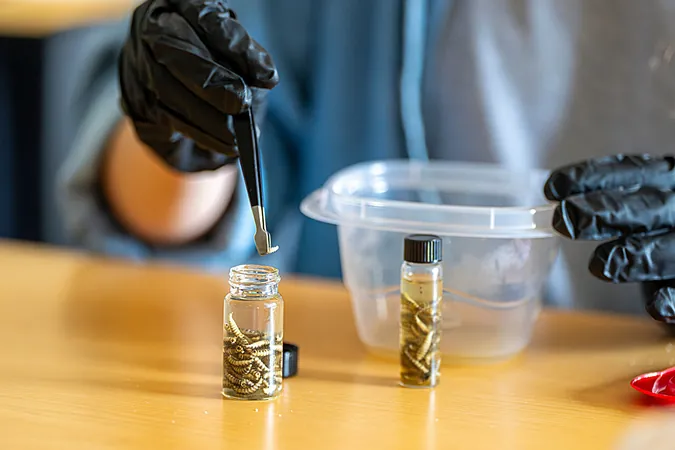
Revolutionizing Forensics: How Light and AI are Transforming Insect Analysis
2025-09-04
Author: Rajesh
A Game-Changer in Forensic Science
In a groundbreaking study, researchers at Texas A&M University have unveiled a cutting-edge technique that combines infrared light with machine learning to accurately identify the sex of blow fly larvae found on human remains. This innovative approach promises to enhance the precision with which investigators can determine the time of death in forensic cases.
Meet the Minds Behind the Discovery
The pioneering work was spearheaded by Aidan Holman, a dedicated doctoral student in Dmitry Kurouski's lab, alongside prominent researchers Aaron Tarone, Davis Pickett, and Hunter West. Their collaborative effort, published in the esteemed Journal of Forensic Sciences, marks a significant stride in forensic entomology.
Why Blow Flies Matter in Forensics
Blow flies play a crucial role in forensic investigations due to their rapid colonization of deceased bodies. By studying the development stages of these insects, forensic experts can estimate the time of death. However, identifying the gender of the larvae is no small feat, as males and females develop at differing rates—often complicating postmortem timelines.
A New Method to Distinguish the Unseen
Traditionally, distinguishing between male and female larvae involved invasive molecular analyses that required destroying the specimens. The Texas A&M team revolutionized this process by employing infrared spectroscopy, which analyzes how light interacts with the insects’ molecular structure, providing intricate "fingerprints" that reveal their sex.
Fast, Non-Destructive Field Application
Using a handheld infrared spectroscopy device, researchers were able to scan live larvae without harming them. By applying three machine learning models to the data, they achieved an impressive accuracy rate—over 95% with the best-performing model. This swift, non-destructive method could significantly enhance real-world forensic investigations.
Broader Implications Beyond Forensics
Although the study primarily addresses forensic timelines, the methods developed have broader applications. For instance, determining the sex of larvae is crucial for sustainable pest control strategies, like the sterile insect technique, particularly in managing invasive species such as the New World screwworm.
Interdisciplinary Innovation for Real-World Solutions
Holman and his team exemplify how interdisciplinary research can yield practical solutions. As Kurouski aptly puts it, "We're taking advanced analytical chemistry and using it for public service." This research not only highlights the potential of innovative technologies in forensic science but also underscores the profound impact they can have on agriculture and biosecurity.
Future of Forensic Science is Here
As light-based analysis continues to evolve, the future of forensic science looks brighter than ever. This cutting-edge approach is set to redefine how investigators gather and interpret evidence, paving the way for faster, more accurate, and non-invasive techniques in the field.


 Brasil (PT)
Brasil (PT)
 Canada (EN)
Canada (EN)
 Chile (ES)
Chile (ES)
 Česko (CS)
Česko (CS)
 대한민국 (KO)
대한민국 (KO)
 España (ES)
España (ES)
 France (FR)
France (FR)
 Hong Kong (EN)
Hong Kong (EN)
 Italia (IT)
Italia (IT)
 日本 (JA)
日本 (JA)
 Magyarország (HU)
Magyarország (HU)
 Norge (NO)
Norge (NO)
 Polska (PL)
Polska (PL)
 Schweiz (DE)
Schweiz (DE)
 Singapore (EN)
Singapore (EN)
 Sverige (SV)
Sverige (SV)
 Suomi (FI)
Suomi (FI)
 Türkiye (TR)
Türkiye (TR)
 الإمارات العربية المتحدة (AR)
الإمارات العربية المتحدة (AR)